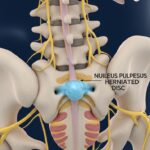Joint pain is a common condition that can affect people of all ages. Whether it’s caused by aging, injury, arthritis, or underlying medical conditions, joint pain can interfere with daily activities, mobility, and overall quality of life. Fortunately, there are many treatment options available today that can help reduce pain, improve joint function, and restore comfort.
In this guide, we’ll walk you through the common causes of joint pain, when to seek help, and the most effective treatment options—both medical and natural.
What Causes Joint Pain?
Joint pain can affect any part of your body, including the knees, hips, shoulders, elbows, fingers, or ankles. Some of the most common causes include:
- Osteoarthritis: Wear and tear of cartilage over time
- Rheumatoid Arthritis: An autoimmune condition causing joint inflammation
- Injuries: Sprains, fractures, ligament damage, or overuse
- Gout: A type of arthritis caused by the buildup of uric acid crystals
- Bursitis or Tendinitis: Inflammation of the joint tissues
- Infections: Such as septic arthritis
- Lupus or other autoimmune diseases
Understanding the cause is key to choosing the most appropriate joint pain treatment.
When to See a Doctor
Occasional aches after exercise or aging are common, but persistent or worsening joint pain should not be ignored. Consult a healthcare provider if you experience:
- Swelling or redness around the joint
- Joint stiffness that lasts more than 30 minutes
- Limited range of motion
- Pain that worsens with activity or at night
- Fever or weight loss alongside joint pain
A doctor may recommend imaging tests like X-rays or MRIs, blood test, or fluid analysis to diagnose the underlying issue.
Non-Surgical Joint Pain Treatment Options
Thankfully, most joint pain treatment can be managed without surgery. Here are the most commonly used conservative treatments:
1. Physical Therapy
A physical therapist can design a tailored exercise plan to improve flexibility, strengthen surrounding muscles, and reduce strain on the joint. Regular movement helps maintain mobility and prevent stiffness.
2. Medications
- NSAIDs (Non-steroidal anti-inflammatory drugs): Such as ibuprofen or naproxen, to reduce inflammation and relieve pain for joint pain treatment.
- Topical creams: That provide localized relief
- Corticosteroid injections: Directly into the joint for temporary pain relief
Always consult your doctor before starting any medication.
3. Hot and Cold Therapy
- Cold packs help reduce inflammation and numb sharp pain
- Heat therapy improves blood flow and relaxes muscles
Alternating between hot and cold therapy can be especially helpful in joint pain treatment.
4. Lifestyle Modifications
- Maintaining a healthy weight reduces stress on joints
- Low-impact exercises like swimming or cycling keep joints active without overloading them
- Avoiding repetitive strain and improving posture can prevent further damage
Advanced Treatments and Alternative Options
For more chronic or severe cases, additional joint pain treatment may be considered:
1. Hyaluronic Acid Injections
These injections help lubricate the joint, especially useful in osteoarthritis of the knee.
2. Platelet-Rich Plasma (PRP) Therapy
PRP uses a patient’s own blood components to promote healing and reduce inflammation in the joint.
3. Stem Cell Therapy
An emerging treatment that may help regenerate damaged joint tissue, still under research in many areas.
4. Acupuncture
Some patients find relief from chronic joint pain with acupuncture treatment or other complementary therapies like massage or chiropractic care.
Surgical Treatment (When Necessary)
If non-invasive joint pain treatment methods fail and pain becomes disabling, surgery might be considered. Common surgical options include:
- Arthroscopy: Minimally invasive procedure to clean or repair the joint
- Joint Replacement: Such as knee or hip replacement for severe arthritis
Surgery is usually recommended only when all other treatments have not been effective.
Final Thoughts
Joint pain can range from a mild annoyance to a life-altering problem, but you don’t have to live with it forever. With the right diagnosis and a personalized treatment plan, most people can manage their symptoms effectively and regain their mobility and comfort.
Whether you’re dealing with chronic arthritis or a recent injury, seeking early medical advice and staying proactive with your treatment can make a huge difference.
Remember: movement is medicine, and help is always available.



